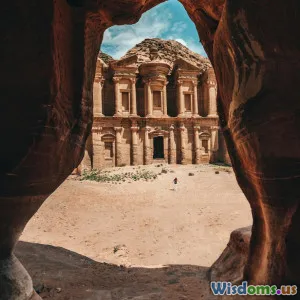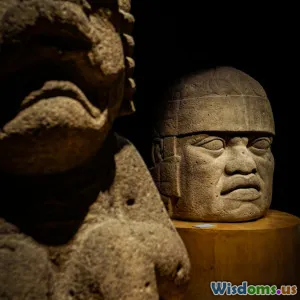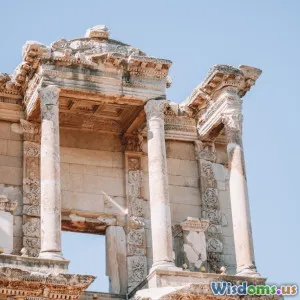
What Did the Lost City of Ubar Really Look Like Beneath the Sands
7 min read Unveil the mystery of Ubar, the legendary lost city beneath Arabian sands, through archaeological insights and historical context. (0 Reviews)
What Did the Lost City of Ubar Really Look Like Beneath the Sands?
Imagine a city so legendary that it captured the imagination of explorers, historians, and adventurers for centuries—a place spoken of in myth as the "Atlantis of the Sands." This is Ubar, sometimes spelled "Iram," a mystical city lost beneath the vast deserts of Arabia. For years, it blended the boundary between legend and reality. But what did Ubar truly look like beneath the dunes, and what secrets did it hold about an ancient civilization that vanished mysteriously?
Introduction: The Legend of Ubar
Stories of Ubar emerge primarily from ancient Arabian texts and Islamic tradition, where it is often associated with great wealth, advanced trade, and sudden destruction due to divine wrath. The famed city was said to have prospered along the frankincense trade routes, connecting the Arabian Peninsula with southern Arabia, Egypt, and the Mediterranean.
Explorers and archeologists were captivated by the notion of a wealthy desert metropolis swallowed by the sands. The question remained not only whether Ubar existed but what its architectural and cultural landscape looked like. Did it rival the grand cities of antiquity? Was it a trading hub, a fortress, or a thriving oasis town?
Tracing the Ghost City: From Myth to Discovery
Ancient Sources and Arabic Lore
Ubar’s earliest mentions come from the Quran, which describes a city named "Iram of the Pillars," inhabited by a people arrogant enough to defy their deity:
"Have you not considered the people of 'Aad? [...] in Iram, having lofty pillars, the likes of which had never been created in the land." (Quran 89:6-8)
These poetic lines hint at monumental architecture, suggesting Ubar featured imposing constructions unlike typical desert settlements.
Arabian traveler accounts such as those by Ibn Battuta and the stories collected by Sir Wilfred Thesiger also hint at a city buried or vanished beneath sands, catalyzing a blizzard of 20th-century explorations.
Modern Explorations: Identifying the Site
In the early 1990s, a collaborative team led by adventurer and filmmaker Nicholas Clapp used satellite imagery—then a novel technique—to identify abandoned caravan routes converging on a collapsed crater in southern Oman’s Dhofar region. This site near Shisr would later become the focal point of intrigue as a potential Ubar.
Excavations revealed remains of an ancient fortress, wells, a fortification wall, and pottery shards dating back several thousand years. However, scholars debate if this spot corresponds precisely to the legendary Ubar or another ancient settlement related to frankincense trading.
Beneath the Sands: What the Archaeological Insights Revealed
Architecture and Urban Layout
The Shisr site uncovered several structural elements:
- Fortress Walls and Towers: Remains of thick defensive walls suggest the city needed protection, possibly from desert raids or regional conflicts.
- Water Management Systems: The presence of wells and underground channels implies sophisticated techniques for collecting and storing scarce desert water.
- Trade Infrastructure: Evidence of storage facilities and caravan stops supports the idea of Ubar as a critical node in trans-Arabian trade networks.
These elements paint a picture of a fortified oasis settlement pivotal in controlling valuable incense caravans, rather than an opulent metropolis of marble columns and lavish palaces.
Lifestyle and Culture
Artifacts such as pottery fragments, tools, and remnants of food storage give clues to everyday life. The people likely lived in simple yet functional homes adapted to harsh desert conditions. Trade brought wealth, but survival depended heavily on water conservation and communal cooperation.
Furthermore, inscriptions and cultural markers align Ubar’s inhabitants with ancient South Arabian civilizations renowned for their multilingual traders and skilled artisans. This aligns with historical understanding of frankincense and myrrh being vital commodities sought globally.
What Caused Ubar’s Disappearance?
Natural Catastrophe or Myth?
Legends associate Ubar’s disappearance with divine punishment, a “catastrophic sandstorm,” or geological sinkhole collapse. Excavations found the site partly collapsed into a limestone sinkhole, which could explain rapid abandonment.
Climate change theories also suggest prolonged droughts and desertification may have devastated water sources, forcing inhabitants to flee.
The Role of Trade Decline
As maritime trade routes emerged, overland caravan pathways waned in importance. This economic shift likely led to urban decline. Ubar, dependent on the frankincense trade, would have diminished in vitality with lost relevance.
Conclusion: Separating Fact from Fantasy
The lost city of Ubar embodies the tangled web between myth and archaeology. While recent discoveries at Shisr provide compelling evidence of an ancient desert fortification linked to incense routes, classical illusions of a grand "Atlantis of the Sands" need recalibrating.
What emerged beneath the sands was not a glittering metropolis, but a resilient desert settlement gracefully adapting to one of Earth's most unforgiving landscapes. The story of Ubar reminds us how trade, environment, and myth intermingle to shape human history.
Understanding Ubar ignites curiosity about vanished civilizations and the forces—be they natural or human—that cause cultures to vanish, urging continued exploration into Earth's rich yet fragile archaeological heritage.
Further Reading and References
- Nicholas Clapp, The Lost City of the Arabian Sands, 1999.
- Juris Zarins, "The Search for Ubar: The Atlantis of the Sands," Scientific American, 1998.
- NASA Satellite Imagery Studies on Sultanate of Oman, 1990s.
- Quran 89:6-8 for historical-cultural context.
Rate the Post
User Reviews
Popular Posts





















